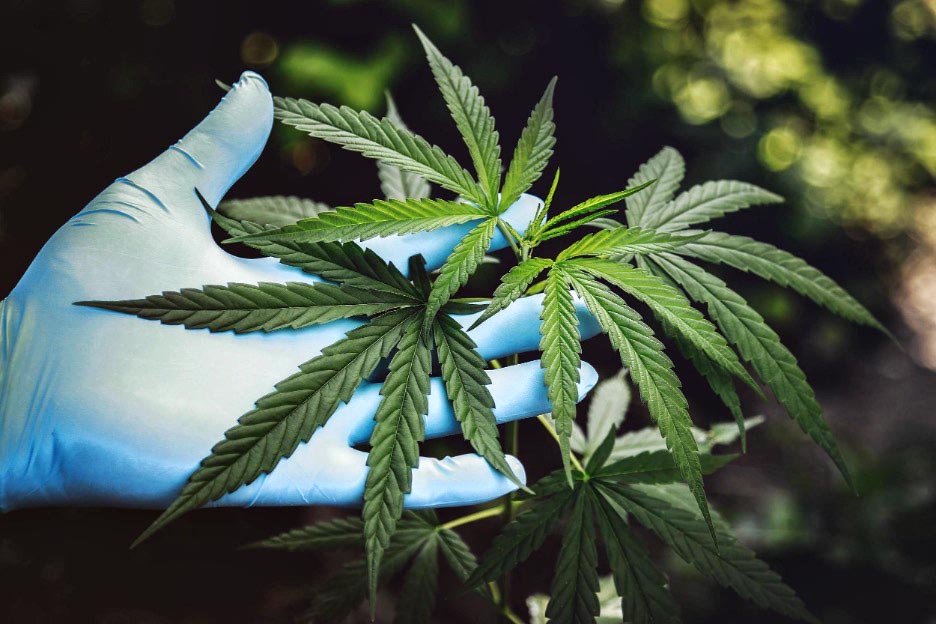Table of Contents

Introduction
As the wave of cannabis legalization sweeps across the globe, a surprising demographic is leading the charge in embracing marijuana for its myriad benefits: baby boomers. Known for their youthful rebellion in the 1960s and 70s, this generation is now exploring cannabis in their golden years for wellness and enjoyment. This article delves into the reasons behind this trend and how marijuana is becoming a vital part of baby boomers’ lives today.
A Trip Down Memory Lane
The Evolution of Marijuana Perception Among Baby Boomers
The baby boomer generation, a demographic cohort born between 1946 and 1964, first came into contact with marijuana during a transformative period in American history—the counterculture revolution of the 1960s and 1970s. This era was characterized not only by significant social upheaval but also by an intense quest for personal freedom and self-expression. During this time, marijuana was widely embraced by many as a powerful symbol of rebellion against the established norms of society. It was not just a substance; it represented a broader movement that sought to challenge authority and promote alternative lifestyles.
 In those formative years, marijuana was often perceived as a tool for expanding consciousness, a means of exploring the mind’s potential, and a way to enhance artistic and spiritual experiences. Festivals, protests, and the rise of rock music intertwined with marijuana culture, making it a staple of the counterculture movement. However, in the mainstream narrative, it was also viewed as a dangerous drug that could lead to addiction and societal decay, resulting in significant stigma surrounding its use. The legal repercussions for marijuana possession further compounded this stigma, leading many to keep their relationship with the substance hidden or to avoid it altogether.
In those formative years, marijuana was often perceived as a tool for expanding consciousness, a means of exploring the mind’s potential, and a way to enhance artistic and spiritual experiences. Festivals, protests, and the rise of rock music intertwined with marijuana culture, making it a staple of the counterculture movement. However, in the mainstream narrative, it was also viewed as a dangerous drug that could lead to addiction and societal decay, resulting in significant stigma surrounding its use. The legal repercussions for marijuana possession further compounded this stigma, leading many to keep their relationship with the substance hidden or to avoid it altogether.
Fast forward to the present day, and we observe a remarkable transformation in the perception of marijuana. Over the past few decades, the dialogue surrounding this plant has shifted dramatically. Once labeled as a dangerous narcotic, marijuana is now increasingly recognized for its medicinal properties. Numerous studies have highlighted its potential benefits in managing various health conditions, including chronic pain, anxiety, and even certain neurological disorders. This newfound understanding has gradually permeated public consciousness, leading to significant global policy changes.
Today, marijuana has been legalized for both medicinal and recreational use in many parts of the world, including several states in the U.S. This legalization not only reflects changing societal attitudes but also opens doors for individuals, particularly baby boomers, to explore marijuana once again. This time, however, the motivation is often centered around health and wellness rather than mere recreation. Many baby boomers are seeking alternative treatments for age-related ailments, turning to marijuana as a potential solution for improving their quality of life.
As baby boomers reconnect with marijuana, it is essential to consider the implications of this shift. Questions may arise regarding the safety and efficacy of marijuana as a treatment option, as well as concerns about potential interactions with other medications that older adults may be taking. Addressing these concerns is crucial for fostering informed discussions about marijuana use among this demographic. Healthcare providers are increasingly called upon to provide guidance, ensuring patients make well-informed decisions based on reliable information.
Moreover, the social stigma that once surrounded marijuana use among older adults is beginning to dissipate. As more individuals share their positive experiences and the benefits they have gained, it becomes easier for others to feel comfortable exploring their potential. Support groups and community resources are emerging, aimed at educating baby boomers about safe consumption methods, dosage, and the various forms of marijuana available today, such as edibles, oils, and topical applications.
In summary, the journey of marijuana from a counterculture icon to a recognized therapeutic agent reflects broader societal changes. For the baby boomer generation, this shift offers a unique opportunity to revisit a substance that once symbolized rebellion but is now viewed through the lens of health and well-being. As they navigate this evolving landscape, it is crucial to remain informed, engaged, and open to the possibilities that marijuana may hold for improving their lives in this new chapter.
The Health Benefits of Marijuana for Seniors
Enhancing Sleep Quality Through Cannabis
Improving sleep quality is a concern that resonates with many individuals, especially as they age. One effective way to address this issue is through the use of cannabis. The plant is known for its ability to help individuals relax and its anti-anxiety and mood-lifting properties. These characteristics can be particularly beneficial in combating the stress and depression that often accompany the aging process.
The Link Between Stress, Depression, and Aging
As individuals grow older, they frequently face various life changes that can lead to increased levels of stress and anxiety. These may include retirement, the loss of loved ones, or health concerns. Such stressors can create a detrimental cycle where anxiety and depression exacerbate sleep difficulties, leading to a decline in overall well-being. By alleviating these emotional burdens, cannabis can serve as a valuable tool in improving sleep quality, which is essential for both physical and mental health.
Personal Experiences: Anecdotes from Baby Boomers
Anecdotal evidence from baby boomers illustrates the positive effects cannabis can have on older adults. For example, consider the story of John (Manzione), a 70-year-old semi-retired publisher. John recounts how incorporating cannabis into his wellness routine has drastically reduced his arthritis pain. This relief has enhanced his physical comfort and allowed him to engage in his beloved Xbox gaming hobby once more. The joy of playing Gears of War with his 68-year-old brother has returned, and with it, a sense of joy and connection to family that many find crucial for emotional well-being.
Scientific Backing for Cannabis Use
John’s experience is not an isolated incident; a growing body of scientific research supports it. Numerous studies have investigated the potential benefits of cannabis for older adults, highlighting its capacity to enhance the quality of life. For instance, research indicates that cannabinoids can effectively reduce inflammation and pain, making daily activities more manageable for those with chronic conditions. Furthermore, studies have shown that cannabis can improve sleep quality, leading to longer and more restorative sleep cycles.
Addressing Concerns and Misconceptions
While the benefits of cannabis are becoming more recognized, it is essential to address any concerns or misconceptions that may linger. Some individuals may worry about the potential for addiction or the psychoactive effects of marijuana. However, many strains of cannabis are now available that minimize these effects while still providing therapeutic benefits. Additionally, education around responsible usage and dosage can empower users to make informed choices that suit their personal health needs.
A Path to Improved Well-Being
In summary, the potential of cannabis to improve sleep quality is a promising avenue for many older adults grappling with the challenges of aging. The anti-anxiety and mood-enhancing properties of this plant can mitigate the stress and depression that often accompany this stage of life. Personal anecdotes, like John’s, combined with scientific research, paint a hopeful picture of cannabis as a tool for enhancing the quality of life in older adults. As awareness grows and barriers diminish, more individuals may discover the benefits of cannabis, reclaiming their leisure activities and improving their overall well-being.
In today’s world, the modern marijuana market presents an astonishingly diverse selection of products. Consumers can find everything from CBD oils and THC tinctures to an assortment of edibles, topicals, and even infused beverages. This vast array can be quite overwhelming, particularly for baby boomers who may be new to the world of cannabis. As the landscape continues to evolve, individuals in this age group require thoughtful guidance to navigate the complexities of the market effectively and make informed choices about which products are best suited for their needs.
Understanding Key Differences: CBD vs. THC
One of the most important aspects of navigating this marketplace is understanding the fundamental differences between two of the most well-known compounds found in cannabis: cannabidiol (CBD) and tetrahydrocannabinol (THC). While THC is the psychoactive component responsible for the “high” that many associate with marijuana, CBD is non-psychoactive and is often sought after for its potential therapeutic benefits without the intoxicating effects. This distinction is crucial for baby boomers, especially those who may be concerned about the implications of using a substance that alters their mental state.
Individuals need to educate themselves on how these compounds interact with the body. For example, CBD has been linked to a reduction in anxiety and inflammation, while THC may be more effective for pain relief and stimulating appetite. By understanding these differences, baby boomers can make more informed choices that align with their health goals and personal preferences.
Starting Slow: The Importance of Low Doses
Another essential consideration for those venturing into cannabis use is the principle of starting with low doses. This approach is particularly important for baby boomers, who may have different tolerances and sensitivities compared to younger users. Starting with a low dose allows individuals to gauge their body’s response to cannabis before gradually increasing the amount as needed. This practice minimizes the risk of experiencing adverse effects and helps ensure a positive experience.
For instance, someone might begin with a CBD oil product containing a low compound concentration, such as 5-10 mg per serving. After assessing their response, they can adjust their intake based on their comfort level and desired effects. This careful, measured approach is key to enjoying the benefits of cannabis without overdoing it.
Consulting Healthcare Providers: A Crucial Step
Before embarking on a journey into the world of cannabis, it is also crucial for baby boomers to consult with healthcare providers. This step is especially important for individuals who are currently taking other medications, as cannabis can interact with various pharmaceuticals. A healthcare professional can provide personalized advice, taking into account the individual’s medical history and current treatments. This consultation not only enhances safety but can also help individuals make better choices regarding the types of products that may be most beneficial for their specific health concerns.
Healthcare providers may also help dispel common myths about cannabis use, alleviating fears and misconceptions that baby boomers might hold. For example, discussing the non-intoxicating nature of CBD and its potential benefits can empower patients to consider its use as a part of their wellness regimen.
Mindful Consumption: Enjoying the Benefits [IMPORTANT!]
Ultimately, the key to navigating the modern marijuana market lies in approaching cannabis use mindfully. By taking the time to educate themselves, starting with low doses and consulting with healthcare professionals, baby boomers can effectively harness the potential benefits of cannabis while minimizing any associated risks. This thoughtful approach fosters a more enjoyable experience and enables individuals to explore the therapeutic possibilities that cannabis may offer.
In conclusion, as this market continues to expand and evolve, baby boomers need to arm themselves with knowledge and resources. By understanding the differences between CBD and THC, practicing cautious consumption, and seeking professional advice, they can confidently navigate the complexities of the modern marijuana market and enhance their overall well-being.
Social and Recreational Aspects of Marijuana Use
When we consider the multifaceted benefits of marijuana, it becomes clear that its impact goes far beyond mere health advantages. One of the most intriguing aspects of cannabis is its ability to enrich social and recreational activities, particularly among the baby boomer generation. This demographic, which its desire for connection and community has often characterized, finds that cannabis introduces a refreshing new dimension to their social interactions.
 For many baby boomers, social gatherings can sometimes feel stifled or overly formal. However, the incorporation of cannabis into these events tends to create an atmosphere that is more relaxed and enjoyable. Imagine a dinner party where guests are not just sharing a meal but also sharing stories, laughter, and a sense of camaraderie enhanced by the presence of cannabis. This shift in dynamics can lead to deeper conversations and a greater sense of bonding among participants.
For many baby boomers, social gatherings can sometimes feel stifled or overly formal. However, the incorporation of cannabis into these events tends to create an atmosphere that is more relaxed and enjoyable. Imagine a dinner party where guests are not just sharing a meal but also sharing stories, laughter, and a sense of camaraderie enhanced by the presence of cannabis. This shift in dynamics can lead to deeper conversations and a greater sense of bonding among participants.
Moreover, marijuana can enhance activities like yoga, cooking classes, and gardening and transform them into communal experiences that foster connection and creativity. For instance, when practicing yoga in a group setting, the calming effects of cannabis can help participants feel more at ease, allowing them to connect with one another and practice on a deeper level. This enhanced state of relaxation can lead to a more profound physical and mental experience as practitioners share in the mindfulness journey together.
Similarly, cooking classes can take on a whole new flavor when cannabis is included in the mix. Participants may find creating meals more enjoyable and collaborative, leading to innovative cannabis-infused dishes. Experimenting with flavors ignites creativity and provides a platform for participants to bond over shared culinary adventures. As they share their successes and perhaps a few culinary mishaps, laughter and stories flow more freely, solidifying friendships and creating lasting memories.
Gardening, too, is an activity that cannabis can enrich. Whether cultivating plants used for medicinal purposes or simply enjoying the act of nurturing a garden, the experience can be made even more enjoyable in a communal setting. Seniors participating in gardening groups often report that the combination of fresh air, hands in the soil, and the calming effects of cannabis fosters a unique sense of tranquility and connectedness with nature and with each other.
The rise of cannabis clubs and marijuana-themed events is a testament to how this plant is not only enhancing individual experiences but also creating new social opportunities. These clubs provide spaces where people can come together to share their passion for cannabis, learn from one another, and form new friendships. Many stories have emerged of seniors finding joy and companionship within these groups, illustrating that cannabis is playing a pivotal role in enriching lives and fostering new social connections.
In summary, the social and recreational aspects of marijuana use among baby boomers represent a growing movement towards community building and shared experiences. As more individuals embrace cannabis in social settings, the potential for connection, creativity, and joy expands significantly. This shift enhances their recreational activities and provides a meaningful way to engage with others, ultimately enriching their lives in profound and lasting ways.
Overcoming Stigma and Embracing Change
In recent years, the acceptance of marijuana and its various uses has significantly increased across many communities; however, it is crucial to acknowledge that a lingering stigma still exists, especially among older generations. This stigma can stem from long-standing societal norms, outdated beliefs, and misinformation surrounding cannabis. Engaging in open and honest conversations with family members and friends is essential to address and dismantle this stigma effectively. By discussing the benefits of marijuana—such as its potential for pain relief, anxiety reduction, and overall wellness—individuals can foster a more informed perspective.
The Importance of Open Dialogue
Engaging in dialogue about marijuana use is not just about sharing personal experiences; it also involves educating others about the responsible use of cannabis. Many older adults may have preconceived notions based on past legal implications or societal views that have since evolved. By providing factual information and sharing positive testimonials from those who have benefited from cannabis, we can help dispel myths and promote understanding. For instance, discussing how cannabis can be used medicinally to alleviate chronic pain or improve sleep quality can resonate with those who may have reservations.
Resources and Support Networks
In addition to personal conversations, it is beneficial to tap into advocacy groups and support networks designed specifically for senior marijuana users. These organizations can offer a wealth of resources, including educational materials, workshops, and community events to foster a supportive environment. They can also connect individuals with healthcare professionals who understand the nuances of cannabis use in older adults, ensuring that users make informed decisions about their consumption. Such networks provide reassurance and community, which can be particularly valuable for seniors navigating the complexities of cannabis use.
Embracing Change and Lifelong Learning
Ultimately, embracing change requires a commitment to continuous education about the evolving cannabis landscape. As laws and regulations change, and as new research emerges about the benefits and risks associated with marijuana, individuals need to stay informed. This means not only understanding the different strains and methods of consumption but also being aware of how cannabis interacts with other medications, particularly for older adults who may be managing multiple health conditions.
Addressing Potential Concerns
It’s also important to anticipate and address any concerns that individuals may have regarding marijuana use. Questions about safety, potency, and side effects are common, and addressing these thoughtfully can ease apprehensions. For example, discussing the importance of starting with low doses, understanding the differences between THC and CBD, and recognizing the significance of individual tolerance levels can empower users to make safer choices.
Overcoming the stigma associated with marijuana use among older generations is an ongoing journey that necessitates open communication, access to resources, and a willingness to embrace change. By fostering informed discussions, providing support, and committing to lifelong learning about cannabis, we can help ensure that individuals are not only aware of the benefits of marijuana but are also equipped to enjoy them responsibly. As the world continues to evolve around cannabis, we must also evolve our perceptions, allowing for a broader acceptance that can enhance the quality of life for many.
Conclusion
The re-emergence of marijuana as a tool for wellness among baby boomers is a fascinating trend. From managing chronic pain to enhancing social interactions, cannabis offers numerous benefits that improve the quality of life for seniors. As baby boomers continue to explore this option, it is crucial to approach it responsibly, with proper guidance and an open mind. The rediscovery of marijuana in their later years underscores its potential to bring health and happiness, proving once again that this generation is not done breaking new ground.
More on Cannabis in Spinfuel Now
Powerful Cannabis Strains and Inflammation Relief for 2024
The Cannabis Business – 4 Tips to Help You Grow and Expand




